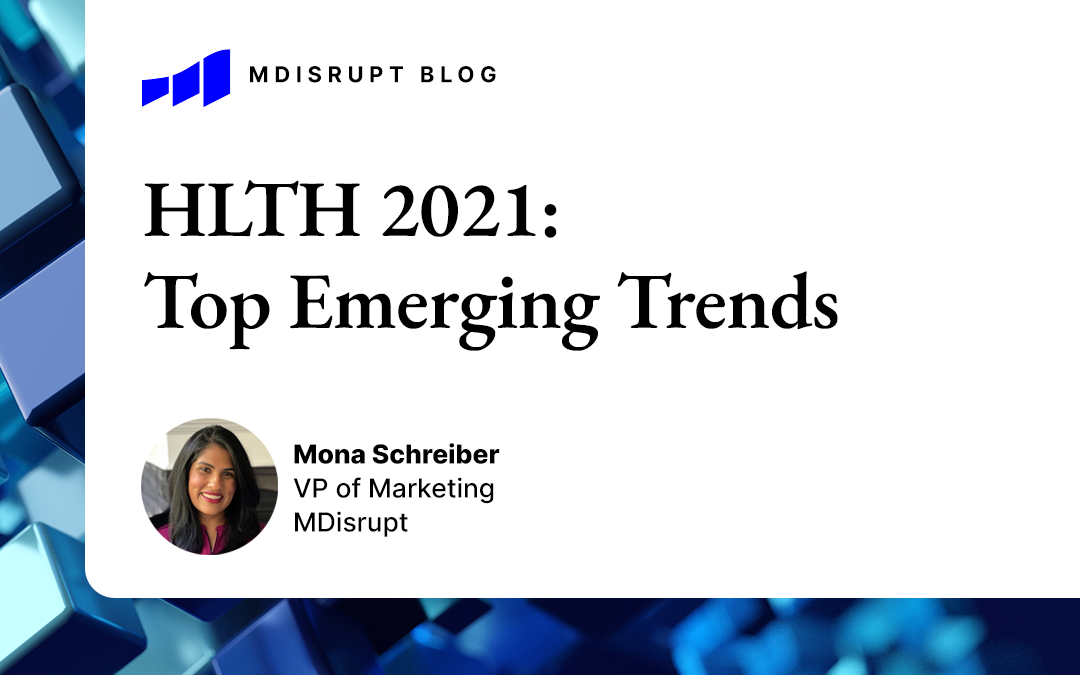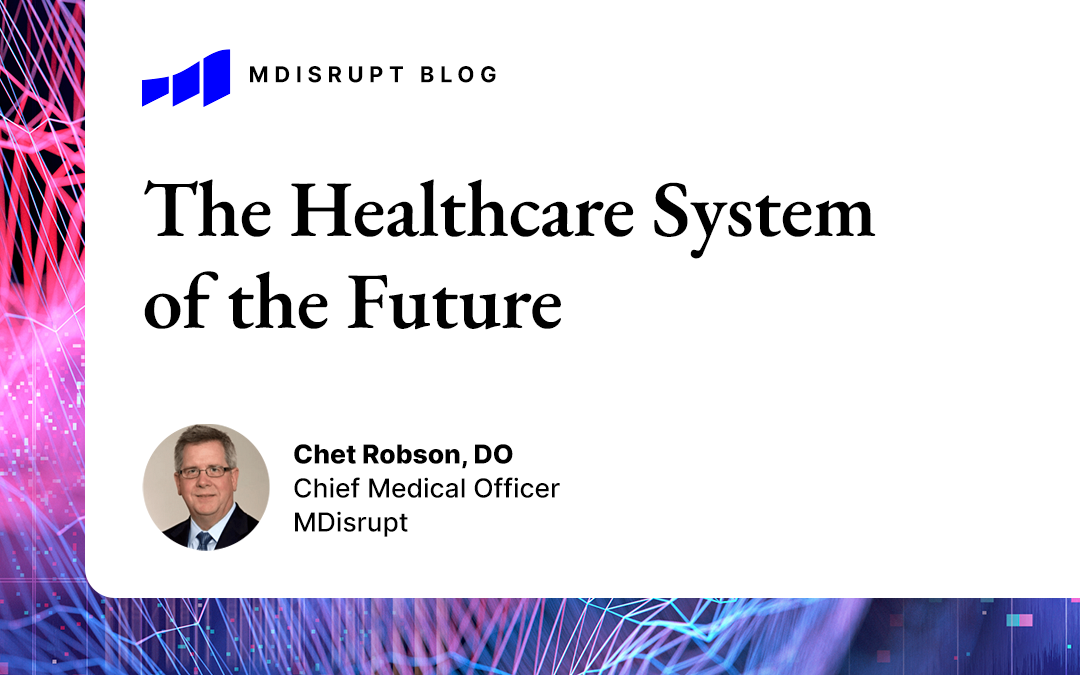
6 Big Themes from HLTH 2021

Our team chose HLTH 2021 as our first conference to attend since the pandemic began. It was a fantastic experience—here are 6 big takeaways.
Practicing clinicians need to be here
What’s the easiest way to get a digital health solution adopted into clinical practice? Solve a real challenge, integrate seamlessly into the clinical workflow, and enhance both patient and clinician experience (we’re taking “Do no patient harm” as a given). This might sound like a lot to strive for, but all these elements are essential. We noticed that the majority of panels and conversations at HLTH were among entrepreneurs and CXOs. While medical expertise was showcased, we didn’t hear from many practicing clinicians who see patients day in and day out about their perspectives on these trends and solutions. We at MDisrupt know that involving clinicians early and often in your healthcare solution yields better and faster adoption. So let’s stop discussing healthcare in silos and make sure all stakeholders have a seat at the table and a voice in the process of digital health development. We’re all united in addressing the same challenges.
Health equity is on everyone’s mind
New health care delivery models like telemedicine are here to stay—entrepreneurs at HLTH made that very clear. Many top payers have even announced virtual-care-specific plans to be launching soon. That’s great for those with reliable internet connection who know how to use technology. But conversations among entrepreneurs and payers revolved around how to reach those who haven’t been reached yet, to enable a more inclusive experience. This included discussions on payment models beyond self-pay and ways to reduce barriers to health literacy based on socio-economic background. From our perspective, the conversations around health equity are important—but now it’s time to move beyond conversation and into action.
Implementing available solutions into the current system is hard
Right now, consumers have access to a plethora of digital health solutions. But there’s a huge gap between what consumers can access and what actually gets used and is clinically useful in the healthcare setting. Furthermore, the consumer/patient experience becomes very disjointed once they bring digital health solutions to healthcare providers with no knowledge or experience of these solutions. Often the potential health outcomes and the ROI of the solution are not clear. The current solution for this is that the big players in healthcare like to test solutions with ‘Pilots” However the term “death by pilot” was heard a lot during HLTH. Our favorite quote came from Chrissy Farr’s interview with Alan Lotvin MD, who is EVP of CVS Health; he said, “Big companies in healthcare like to torture small companies.”
Payers, providers, health systems, and employers all agree that we need a better system of vetting evidence based digital health solutions. How do we solve this? At MDisrupt, we believe that missing from our industry is a unified standards system for digital health to assess the real-world clinical performance of these products. We intend to focus on this monumental challenge over the next few years.
Healthcare’s tech shift was super-accelerated by the pandemic
This was the first conference we’ve attended where a testing protocol was implemented at the conference. Every single person who attended had to be tested. And we have to credit HLTH, as the process was relatively fast and efficient. Deployment happened through an app, human guides helped us through the process, and an onsite testing system delivered results to us in 20 minutes via our apps. This is a demonstration of just how far we have come in digital health in just two years. It showed us that we can bring lab testing closer to the consumer at scale, we can make it more efficient and more convenient, we can take care of people where they live and where they work. Now that we know it can be done, imagine if this could be applied to all areas of healthcare!
Mental health is no longer an afterthought
The pandemic changed the way we think and talk about mental health. Treatment and services for conditions that were once stigmatized, with care available primarily for severe cases, are now becoming part of the norm. . Leaders in mental and behavioral health came together at HLTH to discuss improving delivery models, like telemedicine; integrating mental health practices into a complete healthcare plan, and, best of all,making these changes mainstream. There’s still a long way to go in reaching the masses, but it was clear that technology can make it happen.
The need for human connection is so real
As we registered for HLTH, we were asked to choose a wristband that signaled how you wanted to be greeted:
- Green bands signaled that you were ok with hugs and handshakes
- Yellow bands signaled that you preferred fist elbow bumps
- Red bands signaled a no touch-greeting.
By the end of the first day, the basket of green bands was completely empty, with the majority of us selecting them. After two grueling pandemic years—in which many of us have been in lockdown and seen the suffering and loss of many people close to us—it was clear how much we all needed human contact. There was a lot of welcome hugging and handshaking as folks who hadn’t seen each other for over two years reconnected. The unspoken feeling between us was that we are all in this together, and that we are the changemakers for a better future.
To quote this year’s HLTH motto: ”Dear Future, we are coming for you.”
If you want to dive into more interesting topics related to healthcare, check out our blog at MDisrupt.
At MDisrupt, we believe that the most impactful health products should make it market quickly. We connect digital health innovators to the healthcare industry experts and scientists they need to responsibly accelerate product development, commercialization, adoption, and scale.
Our experts span the healthcare continuum and can assist with all stages of health product development: This includes regulatory, clinical studies and evidence generation, payor strategies, commercialization, and channel strategies. If you are building a health product, talk to us.





